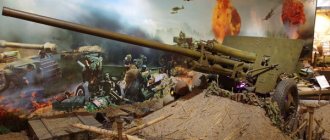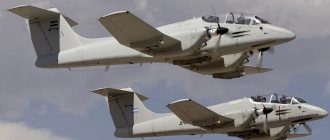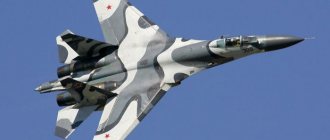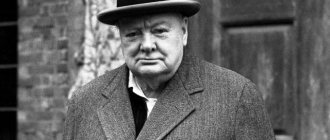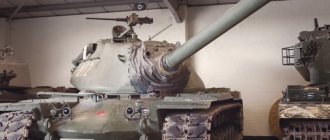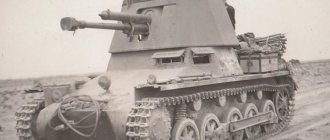Orphan
The First World War was still raging when the British government made the fateful decision to combine land and naval aviation into a single Royal Air Force (RAF).
This did not bode well for naval aviation. For starters, most of the experienced pilots and commanders left for more lucrative ground positions. Their fears were fully confirmed very soon, because both the RAF and the fleet itself turned out to have little interest in naval aviation.
In 1924, the “Fleet Air Force” was formed within the KVVS, which was supposed to operate from ships, including aircraft carriers. It turned out to be a slightly schizophrenic situation when guys from a different branch of the military had to fly from the ships. And to make the situation even more anecdotal, the fleet demanded the introduction of a second crew member - an “observer” from among the sailors. The observer was formally the head of the team. It turned out that representatives of different branches of the military with different subordination, command and service prospects were sitting on the same plane.
Pilots and observers study the map
The deckers were literally between two fires. The RAF command did not need naval air forces. Their heads ached about colonies, air defense of the Island, bombers - and how to divide modest budgets for all this. The navy didn't show much interest either. There was no one in the highest echelons of the naval forces with an aviation background or understanding of what carrier-based aviation was like. The admirals thought in terms of the new Jutland and armored battleships.
They were not going to spend money on aviation, which was subordinate to another branch of the military.
For naval pilots, the admirals saw very modest tasks. Conducting reconnaissance over the sea; conducting torpedo attacks on the enemy fleet to inflict as much damage as possible before the battleships rain down a barrage of shells on it; adjusting ship fire. By the end of the 30s, the destruction of enemy reconnaissance aircraft and anti-submarine defense of the formation were also added to this list.
Regarding protection from enemy aircraft, the official position was as follows:
“The Navy will never be able to maintain sufficient air power to repel a massive attack by the air forces of the leading powers. Therefore, large raids must be repelled by the RAF forces.”
Naturally, the KVVS did not agree with this. They claimed that, in principle, they were not able to support the fleet with fighters beyond coastal waters. That they do not have fighter pilots trained to fly over the sea, as well as a sufficient number of aircraft for all this. And in general, the admirals are not going to jump out of their pants at the first whistle.
Fairey IIID biplane on the deck of the aircraft carrier Pegasus, 1924
The admirals were not too worried about this. This means that we will fight back with anti-aircraft artillery (the effectiveness of which was vastly overestimated before the war).
The fleet generally treated carrier-based fighters with poorly concealed disdain. They took away extremely scarce space from attack and reconnaissance aircraft in the cramped hangars of British aircraft carriers (which carried significantly fewer vehicles than their American or Japanese counterparts). A small quantity (and quality) is enough to intercept reconnaissance aircraft, but otherwise, that’s it.
Even such innovations as radars for detecting air targets and radio guidance were viewed with suspicion by the admirals. From their point of view, radar radiation and radio chatter with pilots would only reveal to the enemy the location of the entire formation, which for sailors obsessed with radio silence was a terrible sin.
After the return of naval air forces to the control of the fleet in May 1939, nothing fundamentally changed; carrier-based aviation remained a poor orphan.
First Battle of Britain
In 1940, the Royal Air Force faced its first major combat test, which was later called the largest air battle in history. The Luftwaffe sought to force London to capitulate in the war and bomb its infrastructure. The following were hit:
- factories;
- ports;
- military buildings;
- residential buildings.
When Germany realized that it would not be possible to strangle the “crown” economically, they began to exterminate civilians. Hundreds of Nazi planes used incendiary bombs. The RAF opposed them 200%.
A Briton watches the sky over London / Photo from The National Archives and Records Administration
At the headquarters of the Royal Air Force they even wrote “we do impossible things right away, miracles will have to wait a little.”
And, indeed, miraculously, Great Britain managed to snatch victory after a 4-month battle. Note! The bombing of Great Britain by Nazi aircraft lasted from July 10 to October 31, 1940.
German historians give the date of the Battle of Britain from mid-August 1940 to May 31, 1941. Although the main battle ended on October 30, the Germans bombed London for another 7 months. The British Air Force lost more than a thousand aircraft and almost 3 thousand people in the battle. The German losses were heavy - more than 2.5 thousand people and almost 2 thousand aircraft.
Interesting In Russia there is a sex bomb, but in the USA it is simply mediocrity: what is known about the Russian spy Anna Chapman
Glorious airplanes
It is not surprising that in such conditions there were the same units on the decks of aircraft carriers.
The need for at least two crew members to be present on board, the limited tasks assigned to naval pilots (reconnaissance and strikes against the enemy), as well as total savings led to the fact that rather strange creations entered service with deck crews.
For example, the Blackburn Skua was supposed to be both a reconnaissance aircraft, a dive bomber, and a fighter. True, against the backdrop of the main attack aircraft - a biplane with fixed landing gear "Swordfish" (nicknamed "Avoska") - it looked like an alien from the future. But the “Avoska” was already being replaced by another machine - the world’s last military biplane aircraft, the Albacore.
Albacore biplanes on the deck of the aircraft carrier Formidable
Great hopes were placed on the two-seat Fulmar reconnaissance fighter, created on the basis of a land light bomber. Compared to the biplane fighters of the previous generation, it looked great, but it could hardly keep up with enemy bombers. And it was better for him not to meet with the German Bf 109.
We must give the British pilots their due.
They were very brave and skillful people, and even in this strange zoo they managed to achieve success.
The Skua sank the German cruiser Königsberg with a dive strike, the Swordfish wreaked havoc on the Italian fleet right in the harbor of Taranto and finally took out the Bismarck with torpedoes. And the “Albacores” were able to drive a couple of torpedoes into Italian ships during the victorious battle for the British at Cape Matapan. They operated from coastal airfields, not without success, especially at night. And even the Fulmars managed to shoot down someone.
Fighter-reconnaissance "Fulmar" on the deck of the aircraft carrier "Victory"
But there were much more problems and disasters.
Quick Reaction Alert
After the end of the Second World War, the need for rapid development of the air force in the UK disappeared. However, with the advent of the Soviet Union, intercontinental ballistic missiles and the development of new technologies, the tasks of pilots also changed.
The air force began to practice Quick Reaction Alert. It refers to small groups of aircraft scattered throughout the country that are responsible for quickly responding to incursions into national or allied airspace. At that time, the USSR, now Russia, was a particular danger.
The air force began to practice Quick Reaction Alert / Photo from the UK Ministry of Defense
Mobile groups consist of 4 - 5 aircraft and several pilots. They are served by more than 100 people. This is not surprising, since the main task of such units is to intercept unwanted aircraft and contain the enemy until reinforcements arrive.
The RAF reorganized well after the war and developed consistent and effective operating protocols. Pilots are always ready for confrontation, but they have never had to shoot down enemy planes in peacetime.
QRAs are on guard for the country 365 days a year. They are available at every base in the UK and are ready to fly within 24 hours. They need a maximum of 10 minutes to meet and depart.
John Bletcher
Pilot
deep hole
The overall results of British deck crews were often dismal. The fleet quickly realized that operating against the enemy within the range of its powerful air force was mortally dangerous. The Norwegian campaign and the battles in the Mediterranean Sea significantly added to the sad “martyrology” of British ships sunk by aircraft. And in the Pacific Ocean, Japanese pilots, without breaking a sweat, sank two British battleships on the open sea. This time, by the way, the requested fighter cover from coastal airfields consisting of ten aircraft arrived, but by that time both ships had already received fatal damage.
The bet on anti-aircraft artillery did not pay off; a determined and numerous enemy easily broke through its curtain without suffering any significant losses.
Moreover, it turned out that one aircraft carrier with one or two dozen Fulmars (at best) is not even capable of protecting itself. Not to mention the ship units.
Illustrious and Formidable were heavily damaged by German aircraft in 1941, and Hermes was sunk within minutes by the Japanese in early 1942.
Sinking Hermes
The failed raid on Kirkenes at the end of July 1941 was also a resounding slap in the face. The Germans managed to scramble their fighters, and the air battle ended with a score of 16:2 in their favor. The British lost a dozen Albacores and four Fulmars. Thirteen pilots died and 27 were captured; two sailed in inflatable boats towards the USSR for a couple of days and finally arrived there.
As a result, by the end of 1941 it turned out that the British fleet was extremely vulnerable to enemy air attacks. And the striking power of its carrier-based aircraft is deeply questionable and can only work against an equally unprepared enemy.
Abbreviations used
- AF - Air Force - Air force in the US Army Air Forces;
- AASF - Advanced Air Striking Force - forward-based air strike forces;
- AM -Air Ministry - Ministry of Aviation;
- A and AEE - Aircraft and Armament Experimental Establishment - Aircraft and Armament Research Center;
- B and GS - Bombing and Gunnery School - school of bombing and aerial shooting;
- CFS - Central Flying School - Central Flight School;
- E and RFTS - Elementary and Reserve Flying Training School - aviation school for initial training and retraining of the reserve;
- FAA - Fleet Air Arms - Navy aviation;
- FG - Fighter Group - fighter group;
- FS - Fighter Squadron - fighter squadron;
- FW - Fighter Wing - fighter wing;
- FC RAF - Fighter Command RAF - RAF Fighter Command;
- FTS - Flying Training School - basic flight training school;
- JSSF - Japanese Single Seat Fighter - Japanese single-seat fighter;
- IAF - Indian Air Force - Indian Air Force;
- MU - Maintenance Unit - maintenance unit;
- RAE - Royal Aircraft Establishment - Royal Aeronautical Institute;
- RAAF - Royal Australian Air Force - Royal Australian Air Force;
- RAF - Royal Air Force - British Royal Air Force;
- RAuxAF - Royal Auxiliary Air Force - Royal Auxiliary Air Force;
- RCAF - Royal Canadian Air Force - Royal Canadian Air Force;
- RFTS - Reserve Flying Training School - reserve flight training school;
- RN - Royal Navy - Royal Navy of Great Britain;
- RHAF - Royal Hellenic Air Force - Royal Hellenic Air Force;
- RSAF - Royal Siamese Air Force - Royal Siamese Air Force;
- Sqn-Squadron - squadron;
- StFl - Station Flight - station link;
- SBAC - Society of British Aircraft Constructors - Society of British Aircraft Constructors.
- TDU - Torpedo Development Unit - experimental air unit for the use of torpedoes.
- OTU - Operational Training Unit - combat training air unit;
- SAAF - South African Air Force - South African Air Force.
- UAS - University Air Squadron - university division.
- USAAF - United States Army Air Force - US Army Air Force.
RAF Arsenal
The Royal Air Force has many modern aircraft in its arsenal, from unmanned drones to powerful fighter jets. The main pride is the multi-role fighter-bomber Hawker Typhoon, which intercepts enemy or unidentified aircraft.
Relevant: Ready to meet terrorists: what surprises the fighters of the elite intelligence service Yamam
The American Lightning, which is often used in carrier-based aircraft due to its vertical landing function, is a powerful striking force. In addition, Boeing C-17 transport aircraft are popular. Their typical task is to transport military personnel between countries if Great Britain entered battle or decided to send reinforcements.
British capabilities also include a variety of reconnaissance, transport and attack helicopters. Technologies, new missiles and systems are also changing.
We have helicopters that can go where regular helicopters can't. This applies to cargo delivery issues. You can both deliver supplies and save people.
Nick Cresswell
Engineer
Training of future pilots
The doors of the RAF are open to everyone, but not everyone can become a pilot. Flying a fighter is a special skill that takes years to develop with specific training.
First, future pilots are tested for physical strength. The main thing is endurance, so they run in the mountains, climb rocks, swim long distances and even play cricket. Overcoming obstacle courses, the ability to plan missions and collect intelligence must be at the highest level.
Flying a fighter is a special skill / Photo from the UK Ministry of Defense
When instructors see that all these stages have been honed to perfection by future pilots, they are transferred to training aircraft, which are divided into classes. First - light motor aircraft, then powerful ones and training on a simulator. After processing all possible scenarios and algorithms, the pilot is allowed to take his first test flights in real fighter aircraft.
Russian pilots do not respond to any messages or questions from our pilots. This is a kind of harassment tactic. They do this on purpose to provoke us. However, we must react and take our planes into the sky.
